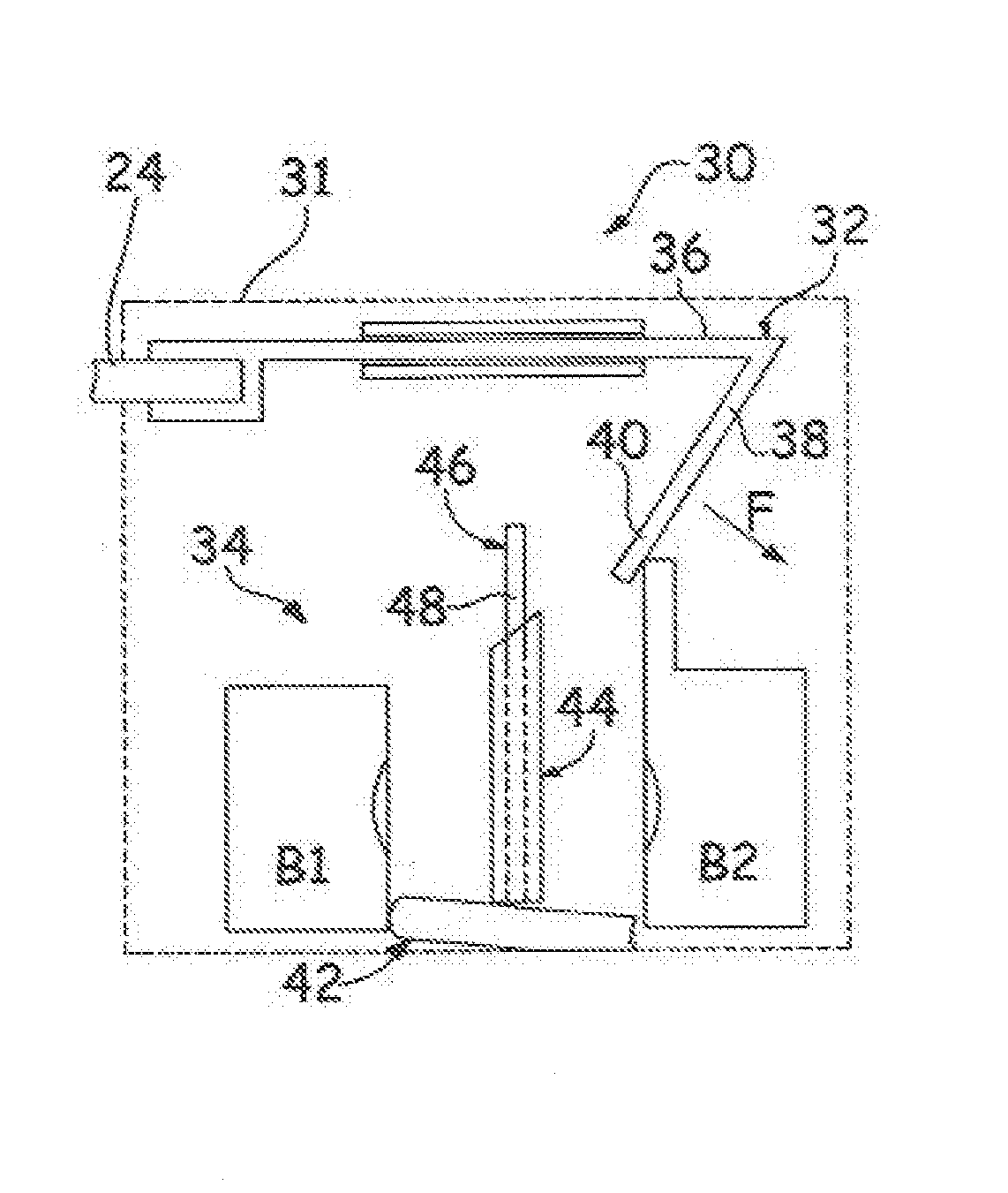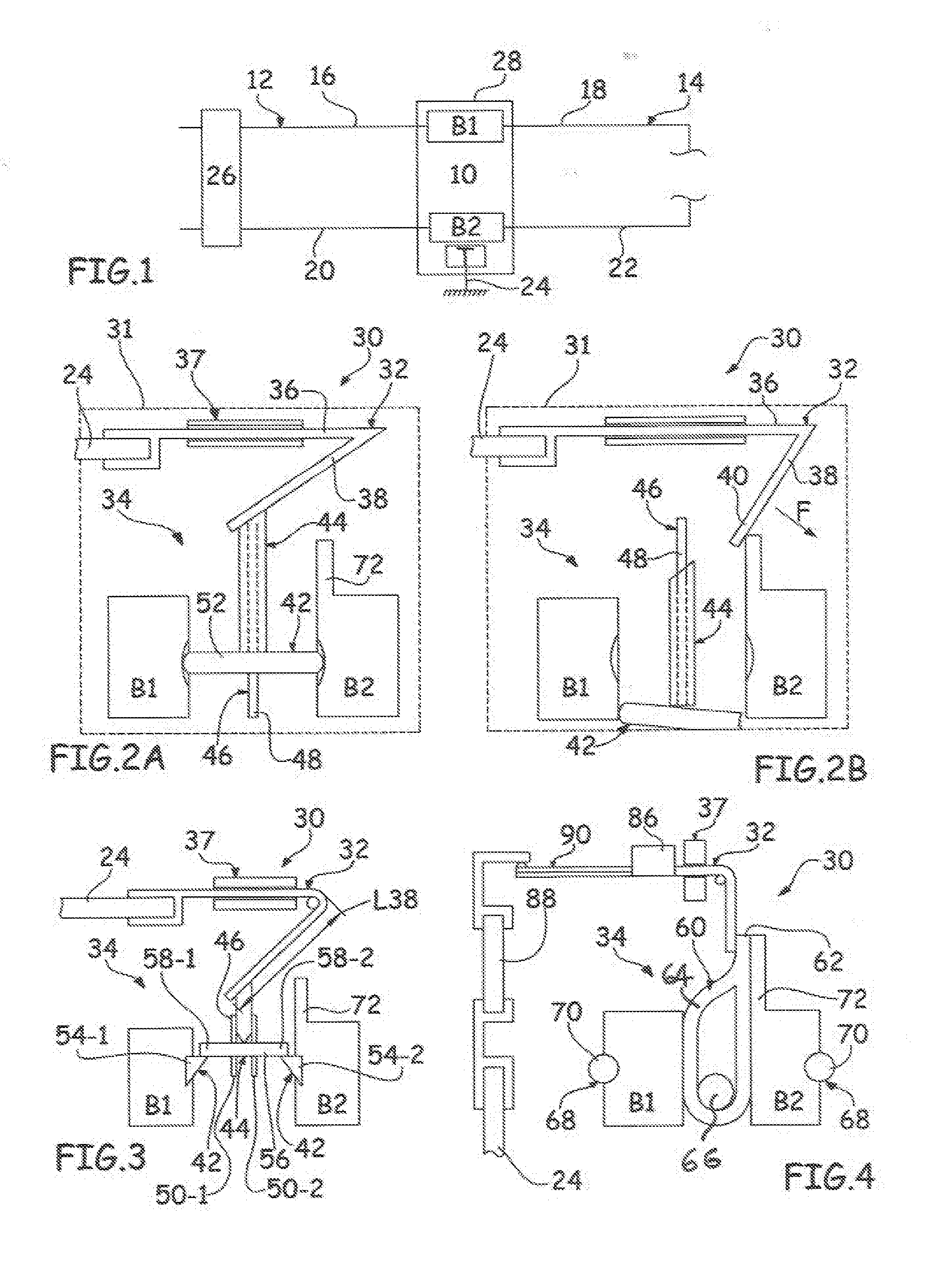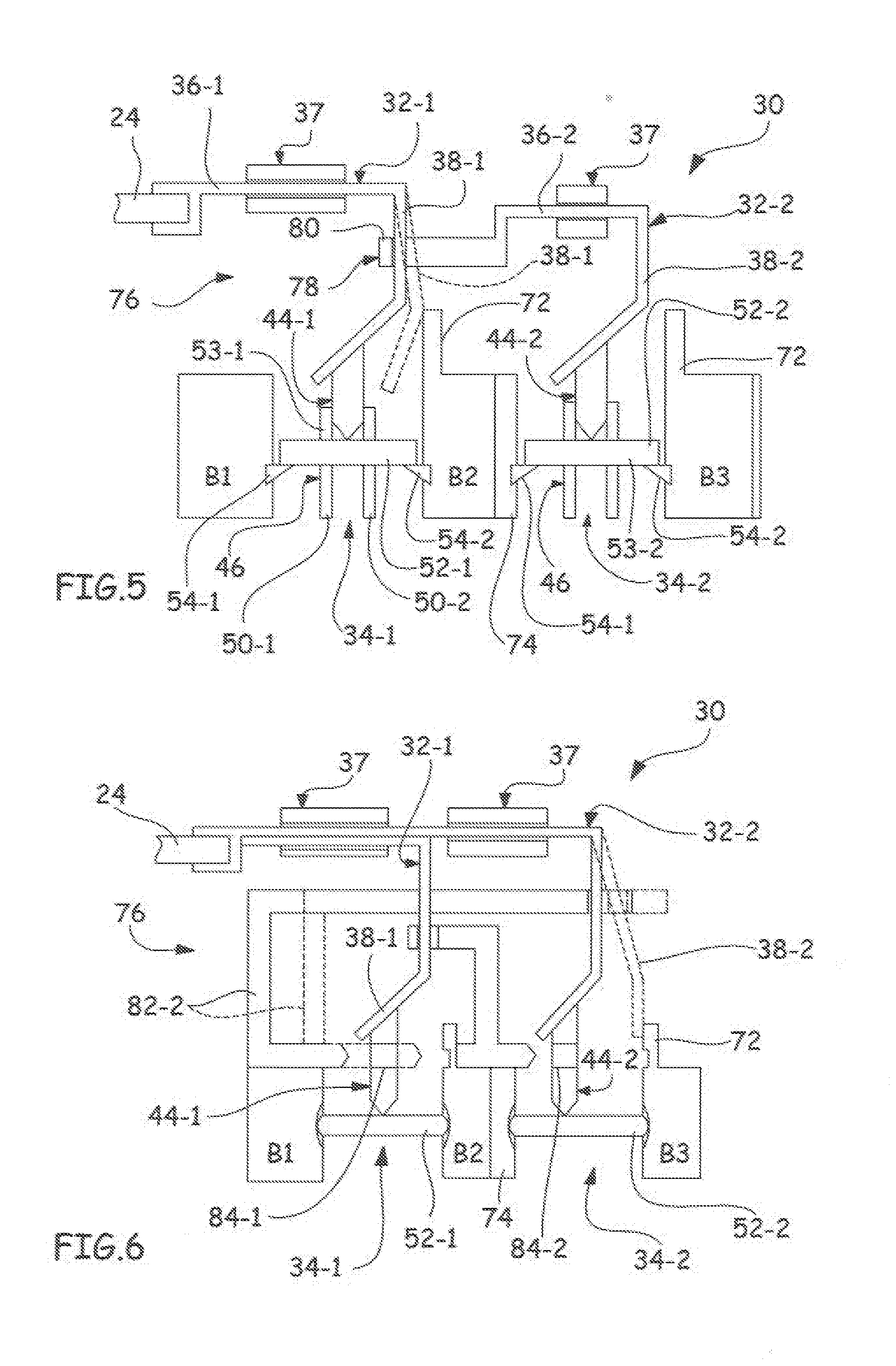Device for thermal monitoring of the terminals of an electrical connection device
a technology for electrical connection devices and terminals, applied in the direction of coupling device details, coupling device connections, emergency protective circuit arrangements, etc., can solve the problems of abnormal overheating, affecting the quality of the contact surface, and affecting the normal temperature rise of the connection devi
- Summary
- Abstract
- Description
- Claims
- Application Information
AI Technical Summary
Benefits of technology
Problems solved by technology
Method used
Image
Examples
Embodiment Construction
[0054]A thermal monitoring device according to the invention is intended to equip an electrical connection device 10 as shown in FIG. 1 and connecting a first electrical circuit 12 to a second electrical circuit 14.
[0055]For example, the first circuit 12 may be a circuit of an electrical distribution system and the second circuit 14 may be the internal circuit of an electrical appliance powered by the distribution circuit.
[0056]To connect the first circuit 12 to second circuit 14, the electrical connection device 10 comprises at least two monitor terminals: a first terminal B1 for connecting a first conductor 16 of the first circuit 12 to a first conductor 18 of the second circuit 14, and a second terminal B2 allows for connecting a second conductor 20 of the first circuit 12 to a second conductor 22 of the second circuit 14.
[0057]According to the single-phase, two-phase or three-phase electrical installation, the electrical connection device 10 may monitor: one, two, or three activ...
PUM
 Login to View More
Login to View More Abstract
Description
Claims
Application Information
 Login to View More
Login to View More - R&D
- Intellectual Property
- Life Sciences
- Materials
- Tech Scout
- Unparalleled Data Quality
- Higher Quality Content
- 60% Fewer Hallucinations
Browse by: Latest US Patents, China's latest patents, Technical Efficacy Thesaurus, Application Domain, Technology Topic, Popular Technical Reports.
© 2025 PatSnap. All rights reserved.Legal|Privacy policy|Modern Slavery Act Transparency Statement|Sitemap|About US| Contact US: help@patsnap.com



